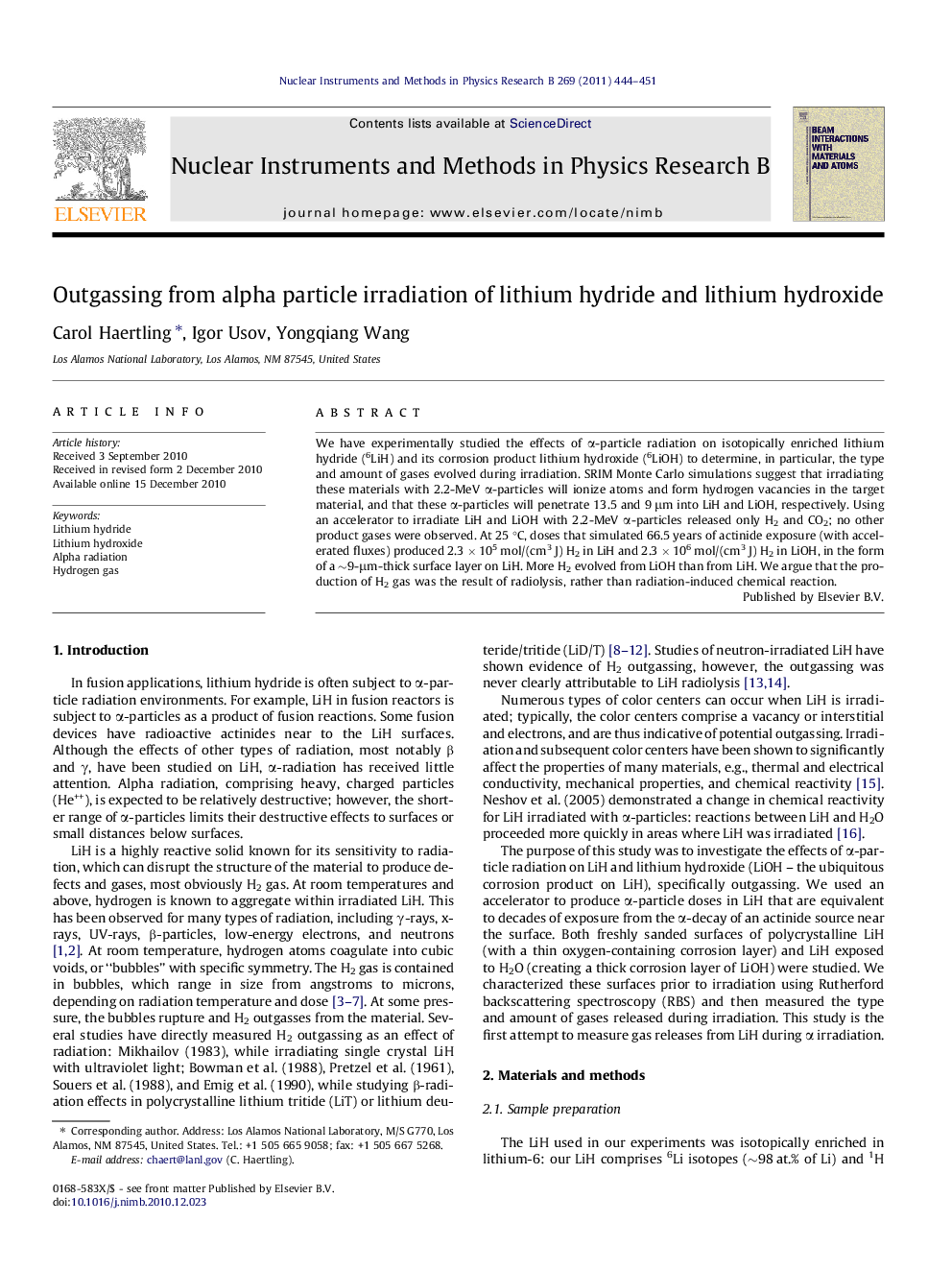| Article ID | Journal | Published Year | Pages | File Type |
|---|---|---|---|---|
| 1686537 | Nuclear Instruments and Methods in Physics Research Section B: Beam Interactions with Materials and Atoms | 2011 | 8 Pages |
We have experimentally studied the effects of α-particle radiation on isotopically enriched lithium hydride (6LiH) and its corrosion product lithium hydroxide (6LiOH) to determine, in particular, the type and amount of gases evolved during irradiation. SRIM Monte Carlo simulations suggest that irradiating these materials with 2.2-MeV α-particles will ionize atoms and form hydrogen vacancies in the target material, and that these α-particles will penetrate 13.5 and 9 μm into LiH and LiOH, respectively. Using an accelerator to irradiate LiH and LiOH with 2.2-MeV α-particles released only H2 and CO2; no other product gases were observed. At 25 °C, doses that simulated 66.5 years of actinide exposure (with accelerated fluxes) produced 2.3 × 105 mol/(cm3 J) H2 in LiH and 2.3 × 106 mol/(cm3 J) H2 in LiOH, in the form of a ∼9-μm-thick surface layer on LiH. More H2 evolved from LiOH than from LiH. We argue that the production of H2 gas was the result of radiolysis, rather than radiation-induced chemical reaction.
